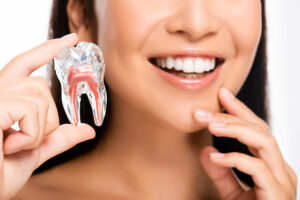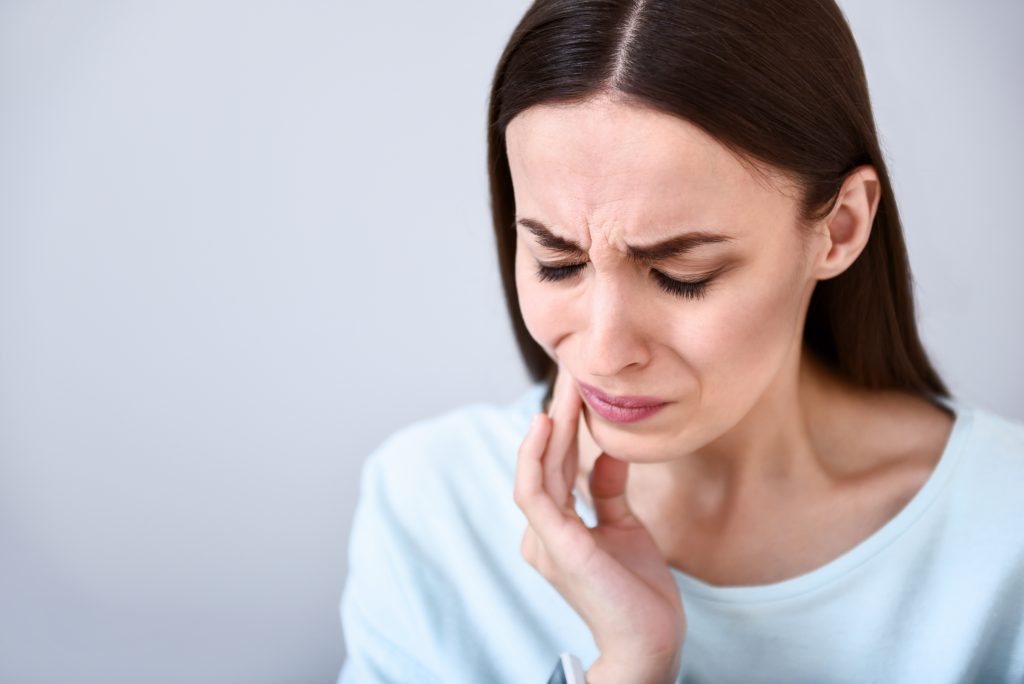Cracking a tooth can be a scary and painful experience. It may happen from biting down on something hard, grinding your teeth, or even from an accident. If you find yourself with a cracked tooth, you might wonder if it can heal on its own or if you need to visit the dentist. In this article, we’ll explore everything you need to know about cracked teeth, including whether they can heal, the risks of leaving them untreated, and the best ways to address the problem.
Can a Cracked Tooth Heal on Its Own?
Unlike other parts of the body, a cracked tooth cannot heal itself. While your bones, skin, and muscles can regenerate and heal over time, tooth enamel does not have the same ability. Once the enamel is damaged or cracked, it will not grow back or repair itself naturally.

However, minor cracks, known as craze lines, are tiny surface cracks in the enamel that don’t require treatment. These are typically harmless and do not cause pain. If the crack is deeper and affects the structure of the tooth, such as the dentin or pulp, it won’t heal on its own and will require dental intervention.
What Happens If You Leave a Cracked Tooth Untreated?
Leaving a cracked tooth untreated can lead to several complications. It’s important to seek dental care as soon as you notice a crack in your tooth, even if it isn’t causing pain at the moment. Here’s what can happen if you don’t treat a cracked tooth:
- Worsening of the Crack: A small crack can grow larger over time, especially when exposed to the pressure of chewing or grinding. The longer the crack remains untreated, the more likely it is to worsen.
- Tooth Sensitivity: Cracks can expose the dentin, the layer underneath the enamel, which may cause your tooth to become sensitive to hot, cold, or sweet foods and drinks.
- Pain: A deeper crack that reaches the inner pulp of the tooth can lead to significant pain, especially when biting down.
- Infection: If bacteria enter the crack, it can cause an infection in the pulp or the surrounding bone. This infection may lead to an abscess, a serious condition that causes swelling, pain, and even fever.
- Tooth Loss: In extreme cases, an untreated crack can result in the tooth becoming so damaged that it needs to be extracted.
Types of Cracked Teeth
Not all cracked teeth are the same, and the severity of the crack will determine the best treatment option. Here are the different types of cracked teeth:
- Craze Lines: These are small, surface-level cracks that only affect the outer enamel. They are common in adults and are typically not a cause for concern.
- Fractured Cusp: This type of crack occurs when a piece of the tooth’s chewing surface breaks off. It usually doesn’t affect the pulp, so there’s less pain involved. A fractured cusp can be treated with a filling or crown.
- Cracked Tooth: This type of crack extends from the chewing surface toward the root. It may involve the pulp and cause pain when chewing. If caught early, the tooth can often be saved with a crown or root canal treatment.
- Split Tooth: A split tooth is a severe crack that runs through the entire tooth and separates it into two parts. Unfortunately, a split tooth usually cannot be saved, and extraction may be necessary.
- Vertical Root Fracture: These cracks begin at the root and move upward. They often cause pain and swelling and may require extraction if the crack reaches the tooth’s surface.
How Is a Cracked Tooth Treated?
Treatment for a cracked tooth will depend on the type and severity of the crack. Your dentist will evaluate the crack and recommend one of the following treatment options:

- Bonding: For minor cracks, bonding can be used to fill in the crack with a tooth-colored resin, which restores the appearance and function of the tooth. This is a quick and cost-effective treatment for small cracks.
- Crown: A dental crown is a cap that covers the entire tooth to protect it from further damage. Crowns are commonly used for more severe cracks or fractured cusps. They can be made from porcelain, metal, or a combination of materials.
- Root Canal: If the crack has reached the pulp, a root canal may be necessary to remove the damaged pulp and prevent infection. After the root canal, the tooth is usually restored with a crown.
- Extraction: In cases where the crack is too severe to repair, such as with a split tooth or a vertical root fracture, the tooth may need to be extracted. After extraction, your dentist can discuss options for replacing the missing tooth, such as a dental implant or bridge.
Can You Prevent a Cracked Tooth?
While some causes of cracked teeth, such as accidents, are unavoidable, there are steps you can take to reduce your risk of cracking a tooth:
- Avoid Chewing Hard Foods: Hard foods like ice, popcorn kernels, and hard candy can crack your teeth. Be mindful of what you’re biting into and avoid using your teeth to open packages or other objects.
- Wear a Mouthguard: If you grind your teeth at night (a condition known as bruxism), ask your dentist about wearing a mouthguard. A mouthguard can help prevent teeth from grinding against each other, reducing the risk of cracks.
- Wear a Sports Guard: If you play contact sports, wearing a sports guard can protect your teeth from injury and cracking during physical activity.
- Maintain Good Oral Hygiene: Keeping your teeth healthy and strong with regular brushing, flossing, and dental check-ups can reduce the likelihood of cracks. Weak or decayed teeth are more susceptible to cracking.
How Can You Tell If Your Tooth Is Cracked?
Sometimes a cracked tooth is obvious, such as when a piece of the tooth breaks off. However, other times, the crack may be less visible, and the symptoms can be subtle. Here are some common signs of a cracked tooth:
- Pain When Chewing: If you feel pain when biting down or releasing pressure, it could be a sign of a cracked tooth.
- Sensitivity: Cracked teeth may become sensitive to hot, cold, or sweet foods and drinks.
- Intermittent Pain: The pain from a cracked tooth may come and go, making it difficult to pinpoint the exact tooth that’s causing the problem.
- Swelling: Swelling around the affected tooth can indicate that the crack has led to infection or irritation of the pulp.
- Visible Crack: In some cases, you may be able to see a crack in the tooth, especially if it’s a larger or more severe crack.
If you experience any of these symptoms, it’s essential to see a dentist as soon as possible. Early detection and treatment can prevent further damage to the tooth.
Can a Cracked Tooth Lead to More Serious Problems?
Yes, a cracked tooth can lead to more serious dental problems if left untreated. A crack that reaches the pulp of the tooth can allow bacteria to enter, leading to infection. If the infection spreads to the surrounding bone or gum tissue, it can cause an abscess, a painful condition that requires prompt treatment.

In some cases, untreated cracks can cause the tooth to break entirely, leading to the need for extraction. Once a tooth is removed, replacing it with a dental implant or bridge can be costly and time-consuming.
How Long Can You Wait to Treat a Cracked Tooth?
If you suspect you have a cracked tooth, it’s important to seek treatment as soon as possible. While minor craze lines may not require immediate attention, deeper cracks should be addressed promptly to prevent further damage. Waiting too long to treat a cracked tooth can lead to infection, increased pain, and the need for more extensive treatment.
Conclusion
A cracked tooth cannot heal on its own, but it can be treated with the help of a dentist. Whether the crack is minor or severe, early intervention is key to preventing further damage and complications. If you experience pain, sensitivity, or swelling, don’t ignore the signs. Visit your dentist to determine the best course of action for repairing the cracked tooth and maintaining your oral health. With proper care and timely treatment, you can avoid more serious issues and keep your smile healthy for years to come.


